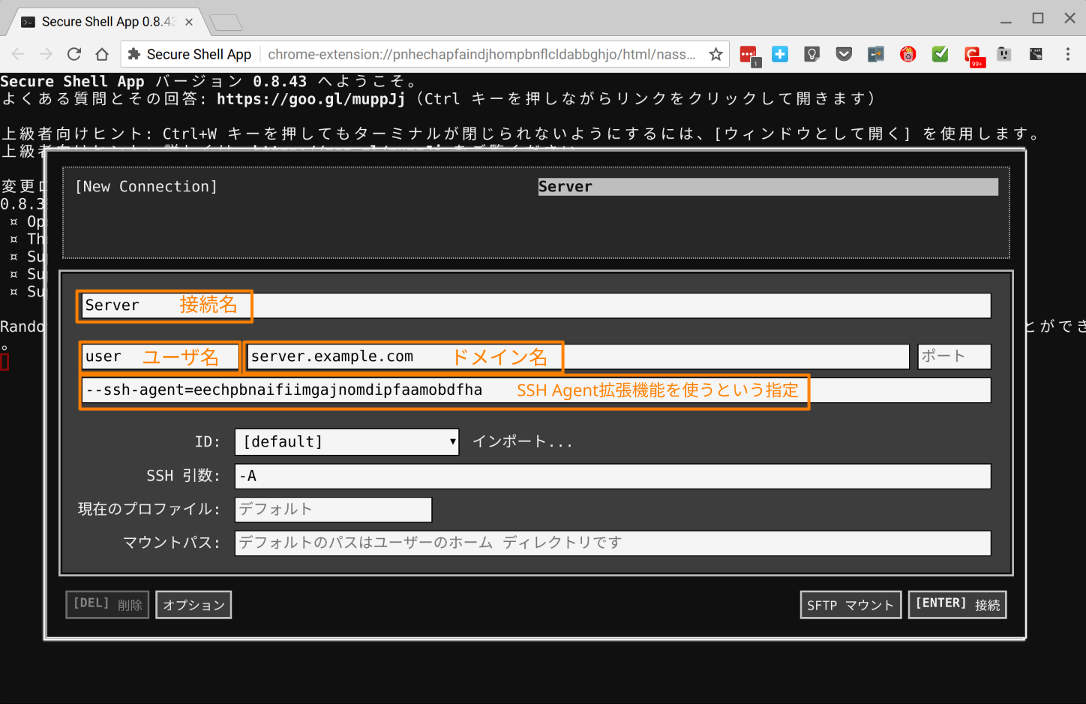
#CHROME SECURE SHELL APP INSTALL#


#CHROME SECURE SHELL APP UPDATE#
$ sudo apt-get update & sudo apt-get dist-upgrade 6 For this example, I give 123.123.123.123 as my instance's static external IP address. Project access: Reserve an external IP address ("Networking" > "External IP").Firewall: Allow HTTP and HTTPS connections to use curl and wget.Boot disk: Start with the default boot disk (Debian, 10GB).Machine type: Start with the smallest machine type.Make a project in the Google Developers Console.Create a Google Compute Engine virtual machine instance and SSH keys:.This is one example setup working from my Chromebook with details for newcomers: There are many ways to run a Jupyter Notebook server on a virtual machine instance. 3 I wanted a cloud-based IDE since I didn't want to spend resources on my Chromebook or on my instances to run the IDE.

I saw that Cloud9 is popular and has good documentation. I prefer the Continuum Analytics Anaconda Python distribution for its Conda package manager. The notebook serves as a top-level script, the parts of which I eventually modularize as components of installable packages.

IPython (Jupyter) Notebooks are an important part of my development process since they enable me to prototype quickly and to share my work in-progress. SSH within the browser is very convenient. 2īetween Google Cloud and Amazon Web Services, I chose Google Cloud for its intuitive UI. Connecting other cloud services expands the possibilities. On a cloud platform, I can mount disks with large data sets and change the instance size to test how efficiently algorithms use CPUs and memory. I wanted to test the scalability of a pipeline.For more complex platform managment, there's the Google Cloud Shell. Snapshots can serve as simple backups of instances. I spend $10 per month on a Cloud9 micro plan for SSH workspaces.I spend about $20 per month on Google Cloud services.I spent $170 on my ASUS C201 Chromebook with 4GB RAM. With a cloud-based platform, I only need a laptop as a web browser.I use the Cloud9 IDE and connect the instance as an SSH workspace.$ ssh -f -N -L localhost:8888:0.0.0.0:8888 Chrome Secure Shell, omit -f to keep the tunnel open (see screenshot). Create an SSH tunnel to forward a local port to the server's port on the instance:.$ disown 1234 (where 1234 is the process ID) Start a Jupyter Notebook server on the instance:.Start a Google Compute Engine virtual machine instance.


 0 kommentar(er)
0 kommentar(er)
